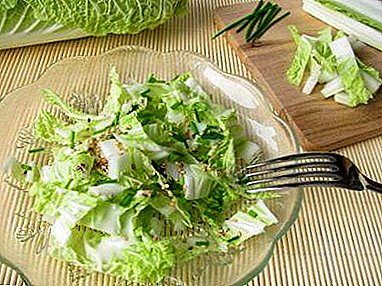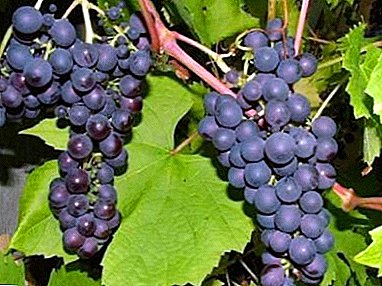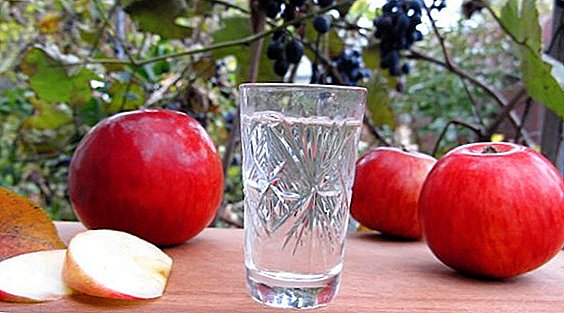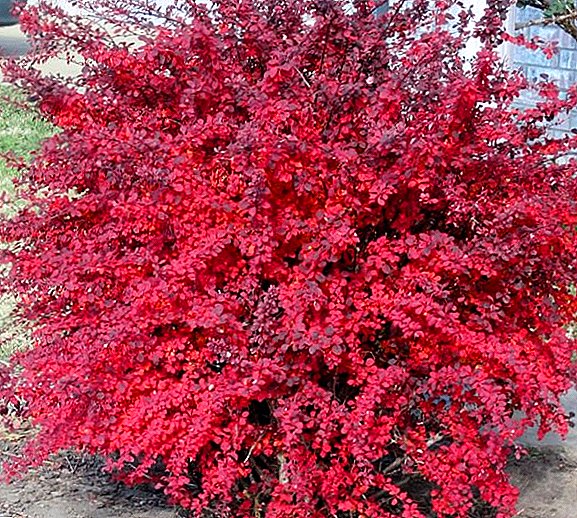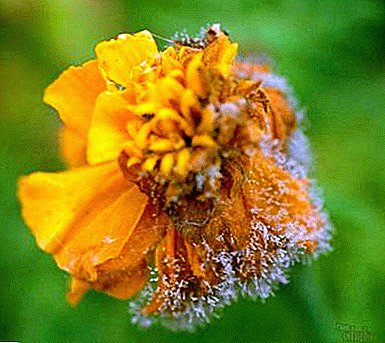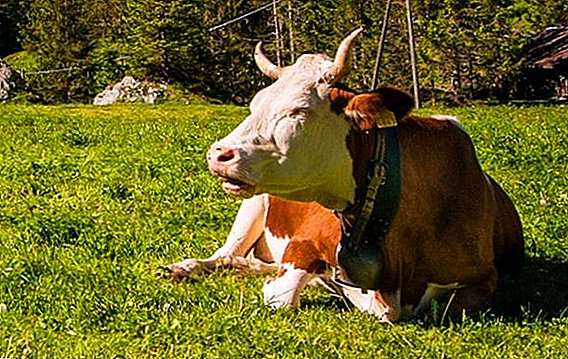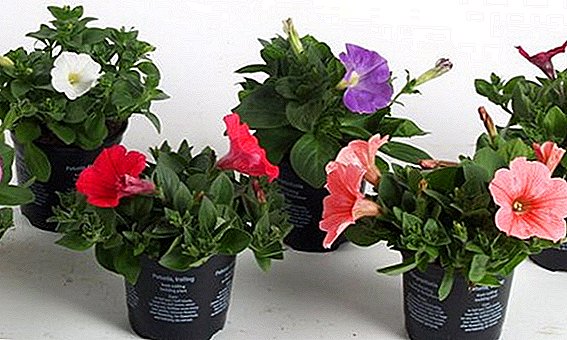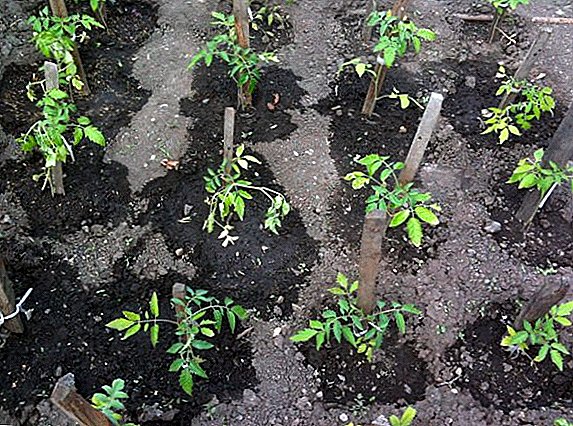 When growing tomatoes, the main task for the gardener is to obtain high-quality seedlings. However, in order to get good tomato bushes from seedlings, it still needs to provide the necessary care, and in particular regular feeding. Therefore, below we will talk about how to feed the tomatoes after planting in the ground, when to do it and how.
When growing tomatoes, the main task for the gardener is to obtain high-quality seedlings. However, in order to get good tomato bushes from seedlings, it still needs to provide the necessary care, and in particular regular feeding. Therefore, below we will talk about how to feed the tomatoes after planting in the ground, when to do it and how.
Types of feeding tomatoes
Good growth of tomato bushes does not depend on how much fertilizer you give for tomatoes. The main thing is that the plant really needed them and they were brought in at the right time. But there is another aspect - how to apply fertilizer, as the feeding of tomatoes can be carried out both at the root and directly on the bush.
Foliar top dressing
 Feed tomatoes after planting in the ground should not only be the root, as many gardeners believe. And first of all it is connected with the high efficiency of foliar sprayings of tomato bushes, which is influenced by the following factors:
Feed tomatoes after planting in the ground should not only be the root, as many gardeners believe. And first of all it is connected with the high efficiency of foliar sprayings of tomato bushes, which is influenced by the following factors:
- Under foliar spraying, much less mineral and organic fertilizers are consumed, since they are distributed directly throughout the plant.
- Tomato bushes get much more nutrition because they absorb nutrients through the leaves, whereas with root dressing, some fertilizer is washed off with water and does not reach the roots.
- When foliar spraying nutrients come very quickly, so this method of feeding plants is ideal if necessary, emergency resuscitation. Also, this factor makes foliar feeding ideal for freshly planted tomato seedlings, the root system of which is only beginning to take root, but the plant very much needs additional fertilizers.
Do not use chlorinated water from the tap, otherwise the plants will remain unclear divorces. For nutrient solutions it is ideal to use rainwater, although the settled one is suitable not worse.
Root dressing
 This type of fertilizing involves the application of fertilizer into the soil directly to the place of development of the root system of tomato bushes. After all, it is from the soil that tomatoes receive nutrients, and if it is rich in them, the plant will grow well.
This type of fertilizing involves the application of fertilizer into the soil directly to the place of development of the root system of tomato bushes. After all, it is from the soil that tomatoes receive nutrients, and if it is rich in them, the plant will grow well.
When making root dressing, you also need to know that they love tomatoes when growing, and what kind of minerals they need for the ovary of a large number of fruits.
In addition, for a more rapid "delivery" of fertilizer to the roots during such irrigation, it is important to loosen the soil, and after that also cover it with mulch. Due to this, soil moisture will last longer, and the plant will absorb fertilizer better.
Important! Both types of fertilizer for tomatoes can be used for plants planted in open ground, and for greenhouse tomatoes. At the same time in the first half of the growing season it is worth alternating the root and extra-root feeding, and in the second, when the first fruits appear on the bushes, it is better to stop only on the root.
When you need to feed tomatoes: what to fertilize the plant after planting in the ground?
Tomato feeding schedule is not too strict, but it is important to stick to it for two reasons. First, if you make top dressing very frequent, the plant can simply burn from the oversaturation of the soil with minerals. And secondly, with very rare fertilization, plants may lack nutrients.
First feeding
 To understand how to fertilize tomatoes immediately after planting in the ground, it is important to know what the plant needs. In the early stages of growth, these are, of course, nutrients for the development of the hive, as well as for resisting diseases.
To understand how to fertilize tomatoes immediately after planting in the ground, it is important to know what the plant needs. In the early stages of growth, these are, of course, nutrients for the development of the hive, as well as for resisting diseases.
Therefore, already one week after transplanting, it can be treated using a foliar method by spraying it with a spray bottle. a solution of serum (1 liter), iodine (10 drops) and water (9 liters).
The first feeding of tomatoes after planting in the ground may be the root, but in this case it should be carried out only after 3 weeks from the date of transplanting. For such top dressing it is worth preparing the following solution:
- 1 tbsp. l fertilizer "Ideal" (buy it in liquid form);
- 1 tbsp. l nitrofoski;
- 10 liters of water.
Did you know? Tomatoes are very useful during the diet, because in addition to vitamins, they also replenish the body with fiber, which the stomach spends a lot of energy during processing.
Second feeding
 The second top dressing of tomatoes after planting in the ground is carried out during the period when flowering appears on the bushes of tomatoes, and the second brush blooms. During this period, the plant especially needs additional nutrients, because after flowering, the first ovaries will begin to form, which should be strong and healthy.
The second top dressing of tomatoes after planting in the ground is carried out during the period when flowering appears on the bushes of tomatoes, and the second brush blooms. During this period, the plant especially needs additional nutrients, because after flowering, the first ovaries will begin to form, which should be strong and healthy.
Therefore, it is better to carry out root dressing, preparing for it solution from:
- 1 tbsp. l the drug Agricole Vegeta;
- 1 tbsp. l superphosphate;
- 1 tsp potassium sulfate (can be replaced with potassium chloride in the same volume);
- 10 liters of water.
Third dressing
 Usually there is a short break between the second and third dressings, especially if the second was carried out as foliar spray. Carrying out the third feeding is at the moment when the third flower brush has already blossomed on the bushes. For such feeding also prepare special composition which includes:
Usually there is a short break between the second and third dressings, especially if the second was carried out as foliar spray. Carrying out the third feeding is at the moment when the third flower brush has already blossomed on the bushes. For such feeding also prepare special composition which includes:
- 1 tbsp. l liquid "Humate sodium" (it can be replaced with fertilizer "Ideal" in the same amount);
- 1 tbsp. l nitrofoski;
- 10 liters of water.
Did you know? Both tomato bushes and fruits are very sensitive to lower temperatures. Therefore, it is important to plant the bush in open ground only when the soil is heated to at least + 10 ° C. Tomatoes are also stored in a cool, but not cold room, so the refrigerator is not suitable for this purpose.
Fourth dressing
The fourth dressing of tomato bushes is usually the last, although in the poor condition of the bushes they can be fed a fifth time. It takes place about three weeks after the third feeding and involves adding tomato bushes with a solution from: 
- 1 tbsp. l superphosphate;
- 10 liters of water.
How to process tomatoes for the prevention of disease?
We have already figured out how to fertilize tomatoes after planting in the ground, but the question of preventing diseases remains open. Unfortunately, for example, late blight is able to hit even the strongest bushes and deprive the gardener of the desired crop.
Therefore, it is important to begin the fight against diseases at the seedling stage and continue after transplantation into open ground. For this purpose you can use many methods:
- Best of all, the solution prepared from 0.5% Bordeaux fluid concentration. Spraying the bushes with this solution can be immediately after transplantation, and even after 2 weeks, increasing the concentration of Bordeaux mixture to 1%. In general, such a preventive measure can be continued every 2 weeks until the fruits on the bushes begin to acquire their natural color.
- Copper sulfate also suitable for the prevention of diseases on the bushes of tomatoes. However, this substance is very toxic for tomatoes, so the concentration of the solution with it should be done very low - 0.05% per 10 liters of water.
- Among gardeners the most common means of processing and feeding plants is calcium nitratewhich is also suitable for the processing of tomato bushes, especially if the signs of top rot have begun to appear on the fruit. For this purpose, preparing a solution of 10 g of nitrate, which must be dissolved in 10 liters of water. In one week, this solution can be applied under the root, and the next - to use for spraying.
- In case the diseases could not be prevented, it is worth using for their treatment. special preparationssuch as "Profit" and "Kartotsid".
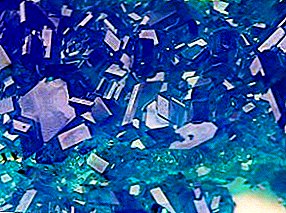
Important! When growing tomatoes in garden beds, do not leave space between the bushes free, as this will weaken the plants and reduce their resistance to diseases. Therefore, between them you can plant a salad or onions.
Late blight on tomatoes can be prevented by simpler methods, without acquiring special preparations, but only using:
- garlicthat needs to be turned into mush and mixed with 1 g of potassium permanganate (need a glass of garlic), diluted with 5 liters of boiling water; this solution is suitable for foliar spraying, which can be carried out as early as 14 days after transplanting and repeat every 10 days;
- kefirThe liter of which must be poured into a bucket of water and the bushes are also processed two weeks after the transplanting;
- wood ashwhich, for application, it is necessary to sift and scatter on the bushes, so that the ash loosely settles on the leaves; It is necessary to repeat such treatments every 4-5 days.



